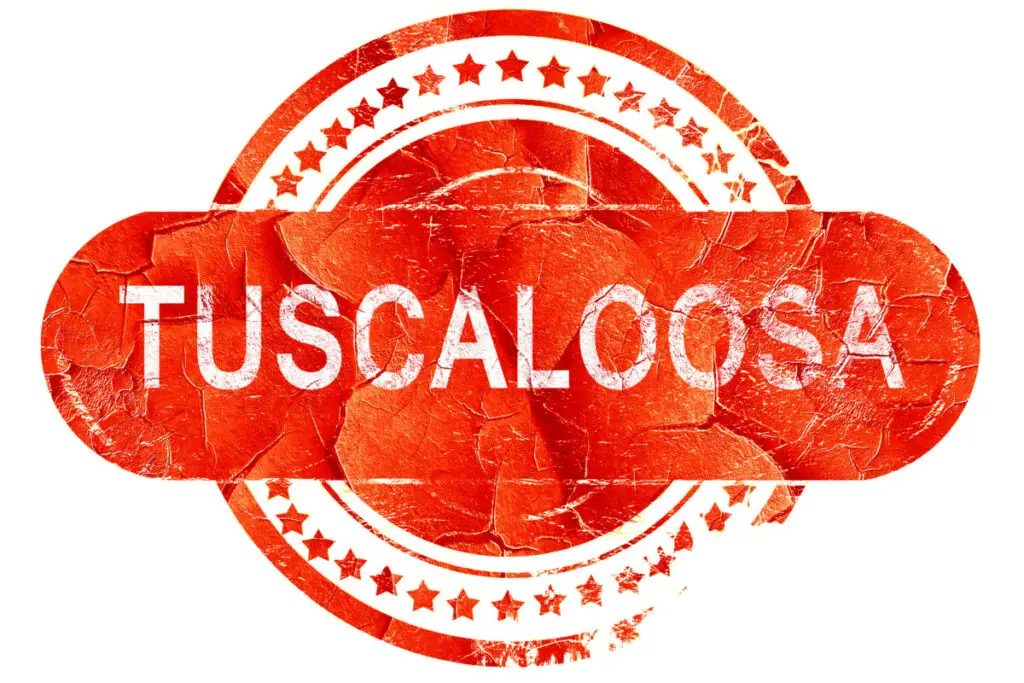
Aside from its beaches, southern hospitality, and being the source of inspiring famous music; Alabama is known to be a conservative and religious State within the US. Surprisingly enough, though, not every city within the State is in concurrence with its State’s political stances. Using one of those cities as an example; is Tuscaloosa, Alabama Liberal?
Although Tuscaloosa County and the State of Alabama are steadily conservative; Tuscaloosa City is slightly libertarian-leaning. Shifts in Tuscaloosa City’s political climate have only recently been recorded, as it was documented to be leaning red at the time of the presidential elections in 2020.
By reviewing the recent demographics within the city of Tuscaloosa; changes in statistics and numbers will reflect data that has been collected throughout the years and explain why there has been a shift in the political climate of Tuscaloosa.
The Relevancy of Demographics Within Politics

It is important to understand that each group of demographic has a significant political impact.
Demographics are simply real-world numbers collected over the years within specific locations. After enough time, they provide enough data to form patterns and make educated, accurate predictions related to different genres and groups of people.
These are important as they allow for understanding poverty rates, population rates, age rates, diversity rates, the standard of living nationwide, and more. Overall, it provides information on the needs and successes of people within specific regions; and hopefully, leaders use this information to make improvements for individuals and groups within designated demographics.
Population: The amount of persons living within an area has a direct impact on how many people are within each genre of demographic in a given location. Whether the population grows or decreases has an effect on if a city will lean liberally or be more conservative.
Race: Diversity rates in an area determine the likelihood of if an area is more prone to be Republican or Democratic. Minority groups have greater tendencies to vote for blue candidates than White people; although those of White descent have greater voter turnout.
Education: Research shows that those with higher education, meaning those with college degrees of a bachelor’s or above, are more likely to vote Liberally.
Gender: Men are more likely to be Republican than Women. There are more women in the US than men. Women have historically been shown to have a higher voter turnout than men. Generally speaking, women are more liberal than conservative and educated women are far less likely to vote for a conservative representing candidate than not.
Age: Older generations are more likely to be Republican than younger generations. Those older than 38 have a higher probability of holding Conservative values. Americans born between the years 1928 and 1964 or belonging to the Boomer and Silent generations have greater chances to be white, religious, have a higher education, or be in favor of red-leaning values than other generations.
The national median age is 38.1.
Younger generations are more racially diverse. They are also becoming less religious. Younger generations are politically active and on course to break records in voter turnout for the 2022 midterm elections. Those 38 or younger are consistently in favor of liberal ideation; including Gen X, Millennials, Gen Z, and younger generations.
Religion’s Influence on Politics
The Bible Belt: Known for being politically conservative and traditionalistic in its values; the Bible Belt is located in what’s referred to as “the South” of the United States. It is a highly religious area. Protestant Christianity; particularly Evangelical and Baptist practiced faiths are very prevalent within this part of the Country. Christians who are republican are more likely to be White than a minority.
Christian Beliefs: Evangelicals and Baptists fall under the category of Protestant Christians- who are nearly always conservative in their political standings. Traditional values are typically taught within the Christian faith and are often in alignment with that are upheld by individuals who identify as right-leaning.
Religious Influence: Studies have been executed and displayed that there is a direct correlation between regular church attendance and voter turnout; meaning should a demographic be highly religious and consistent in their church attendance, the likelihood of the political structure within that area being influenced by the religious values are much higher than in a less religious area.
The Demographics of Tuscaloosa
The following samples are recent collections of data that represent the demographics of Tuscaloosa City, Alabama.
First Collection of Demographics
The United States Census Bureau gave reports of Tuscaloosa’s demographics from 2020 and also provided population estimates Another report condensed the data given by the Bureau into and some of its values are also used within the information shared within this collection:
Age Median: 33.2 years old
Population:
| April 2020 Population | April 2021 Population Estimate |
| 99,600 | 100,618 |
Ethnic or Racial Identity:
| Race | Percent |
| White Alone | 50.9% |
| Black or African American | 44.1% |
| Hispanic or Latino | 2.8% |
| Asian Alone | 2.5% |
| Two or More Races | 1.5% |
| American Indian and Alaskan Native Alone | 0.3% |
| Native Hawaiian and Other Pacific Islander Alone | 0.0% |
Sex:
| Male | Female |
| 48.3% | 51.7% |
Second Collection of Demographics
The second report on demographics uses data gathered from recent elections, the University of Virginia, the US Census, proprietary data mapping and analysis, and other sources. The following values are representative of populations within the city of Tuscaloosa City, Alabama.
Age Median: 32.5 years old
Education:
| Degrees: | Percentage: |
| Bachelor’s or Higher | 36.37% |
Origin of Race by Self-Identification:
| Self Identified Race | Percentage |
| White | 50.3% |
| Black | 42.5% |
| Hispanic | 3.5% |
| Asian | 2.4% |
| Other | 1.1% |
| Native American | 0.1% |
Third Collection of Demographics
This collection is representative not of Tuscaloosa City, but of Tuscaloosa County from the year 2020. The source presents a thorough analysis of gathered data and provides the following information about the County’s demographics:
Population: 100,633
Median Age: 29.5
| Race or Ethnic Identity | Percentage |
| White (Non-Hispanic) | 49.4% |
| Black (Non-Hispanic) | 43.9% |
| Hispanic | 2.8% |
| Asian (Non-Hispanic) | 2.47% |
| Multiracial (Non-Hispanic) | 1.1% |
Religion in Tuscaloosa City
The following table is taken from a survey that represents the percentage of those who are religious in Tuscaloosa City, Alabama. According to the report, 55.4% of Tuscaloosa are belonging to practicing religion.
| Religious Sect | Percentage of Religious Participants |
| Baptist | 33.4% |
| Another Christian faith | 7.6% |
| Methodist | 7.1% |
| Catholic | 2.0% |
| Pentecostal | 1.8% |
| Presbyterian | 1.5% |
| Episcopalian | 1.0% |
| Church of Jesus Christ | 0.7% |
| Islamic | 0.2% |
| Jewish | 0.1% |
| Lutheran | 0.1% |
| Of an Eastern Faith | 0.0% |
Tuscaloosa’s Political Climate: From Red to Blue
Tuscaloosa’s Population: There has been a subtle, yet steady growth within Tuscaloosa City, and its demographics are growing. expansion in demographics. Because the majority of demographics within the United States are currently exhibiting favoritism towards the Democratic Party and are blue-leaning; the odds of Tuscaloosa becoming a more liberal area due to population influx are greater.
Diversity in Tuscaloosa: Tuscaloosa was given a diversity score of 80, which was reported to be quite a high ranking in comparison to other states. Groups of race and ethnic minorities are proven to be more Democratically supportive. Although outnumbered in population as well as voter turnout, the high rankings of diversity could contribute to the slight shift towards favorability of liberal value points.
Ages within the City: The age median of Tuscola City is far below those belonging to older generations that are more prone to be in favor of the Republican Party. With the population ratio of young Americans outnumbering persons who, more generally speaking, uphold traditional value points; numerical evidence suggests that an eventual change of party affiliation would have occurred.
Gender Ratios in Tuscaloosa: Being marginally outnumbered, the polls would bear semblance to the ratio of men to women within Alabama’s Tuscaloosa City. Not much different than the ratio United States; there are more women than men, so there are more people who are probable to contribute to voter turnout and vote for a Democratic candidate.
Education in Tuscaloosa: In a staggering and low minority, much of the population of adults living in Tuscaloosa do not have c of a bachelor’s degree or higher. Studies would show most residents would, therefore, have a greater chance of voting for a delegate who upholds Conservative values.
Religious Influence within Tuscaloosa: The majority of the population in Tuscaloosa is religious and is recorded as belonging to a practicing faith. Most of these percentages have been documented as Protestant Christian churches, which teach traditionalistic values and line up with the Republican Party’s beliefs.
The majority of Tuscaloosa is White. White people are proven to have a higher voter turnout. The majority of Tuscaloosa is also religious. Consistent church attendance is directly correlated with higher voter turnout. The majority of practiced religion within the city is that of a Protestant Christian faith. The majority of Christians in the United States are Conservative and have higher chances of being White.
Final Thoughts
While Tuscaloosa has recently moved its standings from being a Conservative city to leaning slightly liberally, it remains fairly close to the middle of the spectrum and could change its stance at a given point. Many of its demographical ratios are fairly balanced and could be influenced by simple factors within the coming months.
Although the Country as a whole is more Democratically inclined as of current events, within the geographical location of Tuscaloosa City; its influences are heavily Republican.

